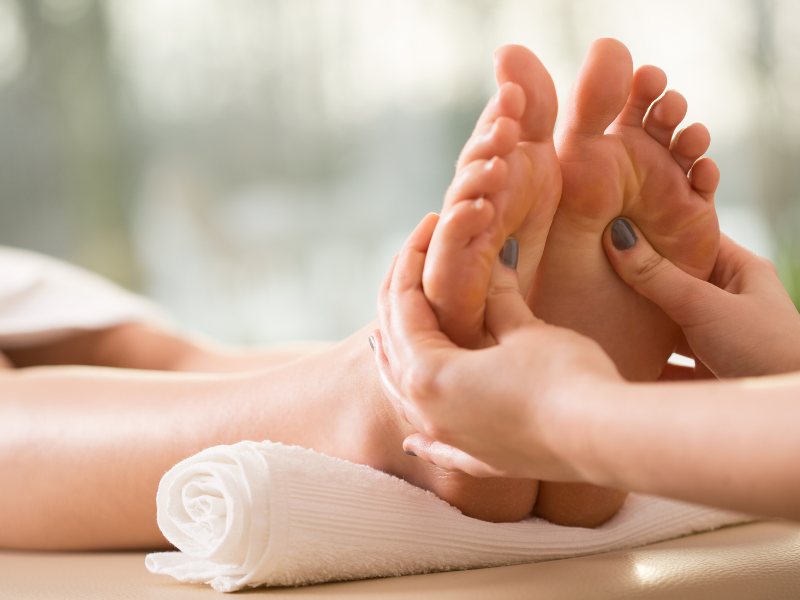Foot Reflexology Chart Explained: Easy Reference Guide

Reflexology, an old recovery method that has stood the examination of time, proceeds to astound the minds and soles of people worldwide. This holistic therapy is based upon the principle that specific factors on the feet, hands, and ears represent various organs and systems within the body. By applying pressure to these factors, professionals intend to advertise recovery, relieve tension, and restore balance to the body.
The Origins of Reflexology
While the precise beginnings of reflexology are questioned, proof suggests that similar methods have actually existed for hundreds of years throughout different societies. Ancient Egyptian tombs portray what seems foot massages, while typical Chinese medication has long acknowledged the interconnectedness of different body components. The contemporary method of reflexology, nonetheless, was established in the very early 20th century by Dr. William Fitzgerald and later on improved by Eunice Ingham, commonly referred to as the “mommy of reflexology.”
How Reflexology Works
The basic idea behind reflexology is that the body is divided right into 10 vertical areas, each corresponding to various organs and body parts. By applying stress to specific points within these zones, reflexologists think they can influence the matching locations of the body. For example, the ideas of the toes are believed to correspond to the head, while the sphere of the foot is related to the chest and lung area.
Possible Benefits of Reflexology
Proponents of reflexology declare a wide variety of benefits, consisting of:
Stress and anxiety reduction and leisure
Boosted blood circulation
Boosted immune system function
Pain relief, especially for migraine headaches and headaches
Improved sleep top quality
Alleviation of digestive system problems
While clinical research study on reflexology is ongoing, several people report considerable renovations in their general wellness after getting therapies. It’s essential to keep in mind that reflexology is normally considered a complementary treatment and must not replace conventional healthcare.
What to Expect During a Reflexology Session
A common reflexology session lasts in between 30 to 60 mins. The reflexologist will certainly begin by analyzing your feet before applying pressure to certain factors.
Self-Reflexology Techniques
While expert sessions can be advantageous, you can also practice some fundamental reflexology strategies in the house. Below are a couple of easy workouts to attempt:
Foot rolling: Roll a tennis sphere or specialized reflexology sphere under your foot for a few minutes daily.
Thumb strolling: Use your thumb to “walk” along the soles of your feet, applying pressure as you go.
Hand reflexology: Apply pressure to the facility of your palm using your thumb from the contrary hand.
Incorporating Reflexology right into Your Wellness Routine
Just like any kind of new health and wellness technique, it’s vital to approach reflexology with an open mind and reasonable assumptions. While it might not be a magic bullet, several find that routine reflexology sessions or self-practice can be a useful addition to their general health regimen. Whether you’re looking for anxiety relief, discomfort administration, or just a minute of leisure, reflexology uses an unique approach to supporting your body and mind.
Keep in mind, if you have any type of wellness problems or are pregnant, it’s always best to seek advice from with your medical care service provider prior to beginning any kind of brand-new therapy, consisting of reflexology. With its mild approach and capacity for advertising general wellness, reflexology remains to be a popular option for those looking for a natural, alternative method to health and wellness and wellness.
While the exact origins of reflexology are questioned, evidence suggests that comparable practices have existed for thousands of years throughout various cultures. JKリフレどっとこむ of reflexology, nevertheless, was created in the early 20th century by Dr. William Fitzgerald and later on refined by Eunice Ingham, commonly referred to as the “mom of reflexology.”
The basic idea behind reflexology is that the body is split right into ten upright areas, each matching to different organs and body components. As with any new health and wellness method, it’s important to approach reflexology with an open mind and practical expectations. Whether you’re seeking tension relief, pain management, or just a minute of relaxation, reflexology uses an one-of-a-kind strategy to supporting your body and mind.